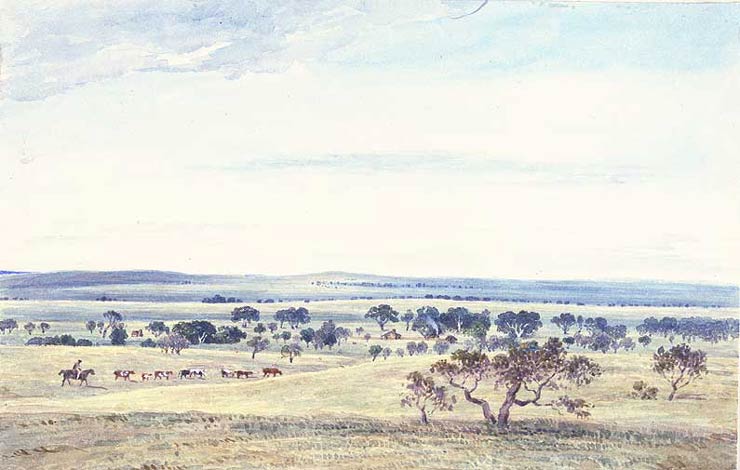 'Panorama of Challicum, No. I', c1850
'Panorama of Challicum, No. I', c1850
TLF ID R3255
This is a watercolour measuring 15.8 cm x 24.4 cm showing gently undulating grassland and narrow bands of trees. A group of cows is being herded by a mounted man to a lower area behind a hill, possibly towards a small group of huts that can be glimpsed in the middle ground. The artist, Duncan Cooper, included this painting as the ninth watercolour in his field sketchbook and inscribed the title 'Panorama of Challicum, No. I' on its mount. The watercolour is the first of nine panoramas that together form a cyclorama of the Challicum area in south-western Victoria.
